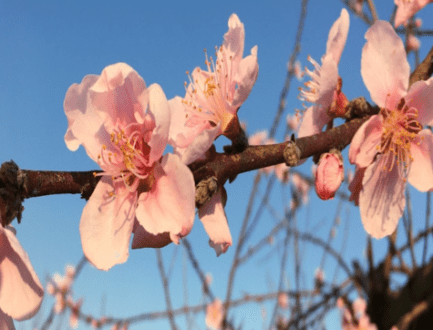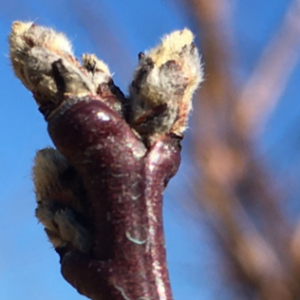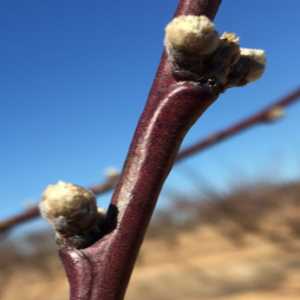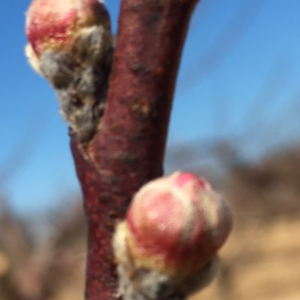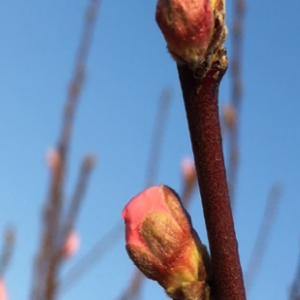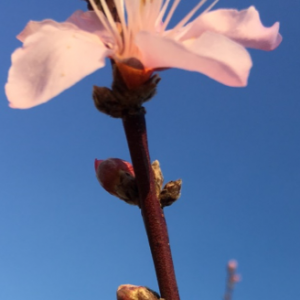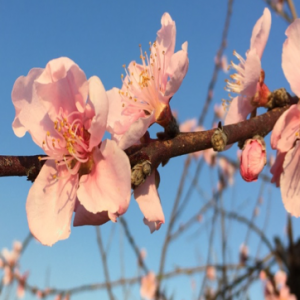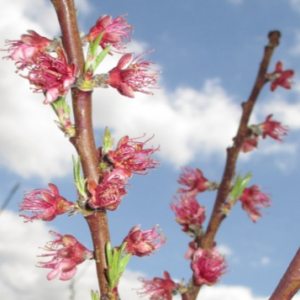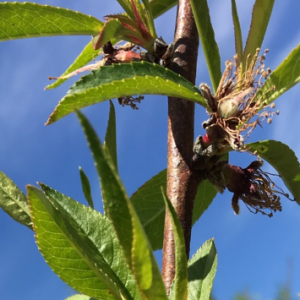Jan 29, 2022Peach growth stages and critical temperatures in Alabama
Every spring season, peach growers in Alabama have concerns about the occurrence of potential frost or freeze events and the potential damage to the growing peach crop. To help predict the outcome of an early spring freeze event, a grower should consider the temperature at which flower buds are injured. This depends primarily on their stage of development among other factors.
In general, buds are most cold hardy during the winter when they are fully dormant. As they begin to swell and the blossoms begin to develop, they become less resistant to freeze injury. Resistance to freeze injury varies not only between cultivars and orchards, but also within trees. Buds that develop slowly tend to be more resistant at lower temperatures.
Figures 1-8 illustrate the peach bud stage of development. The table shows the average temperatures required to kill 10% and 90% of developing peach buds if they are exposed for 30 minutes.
- Figure 1. First Swelling
- Figure 2. Calix Green
- Figure 3. Calix Red
- Figure 4. First Pink
- Figure 5. First Bloom
- Figure 6. Full Bloom
- Figure 7. Post Bloom (Petal Fall)
- Figure 8. Shuck Split / Fruit Set
Peach Buds Stage of Development
| Peach Buds Stage of Development | 10% kill (F degree) | 90% kill (F degree) |
|---|---|---|
| First swelling | 18 | 1 |
| Calix Green | 21 | 5 |
| Calix Red | 23 | 9 |
| First Pink | 25 | 15 |
| First Bloom | 26 | 21 |
| Full Bloom | 27 | 24 |
| Post Bloom | 28 | 25 |
Minimize the potential for cold damage
- Choose a good site prior to planting the orchard. Use high ground that allows for easy drainage of cold air off the site.
- The choice of the proper cultivars is critical, including sufficient cold hardiness for the region in which they will be grown as well as a suitable chilling hour requirement.
- The timing of dormant pruning is important. If a frost or freeze event is expected, it is best to delay dormant pruning as long as possible.
- Orchard floor management can significantly influence springtime orchard temperature. Soil that is not covered with vegetation can absorb more heat during the daytime and give off more heat in the nighttime than soil that is covered. Similarly, moist soil is also warmer at night than dry soil.
- During cold nights (radiational freeze), wind machines can be used to stir warm air above the orchard.
- The most difficult freeze conditions to manage occur during an advective freeze (when it is very cold in combination with high wind speeds).
- Using orchard heaters, burning straw bales, etc. may be helpful.
- Following pollination, once fruit have set and they are beginning to grow, cold damage can still occur.
– Elina Coneva, Alabama A&M an Auburn Universities Extension


